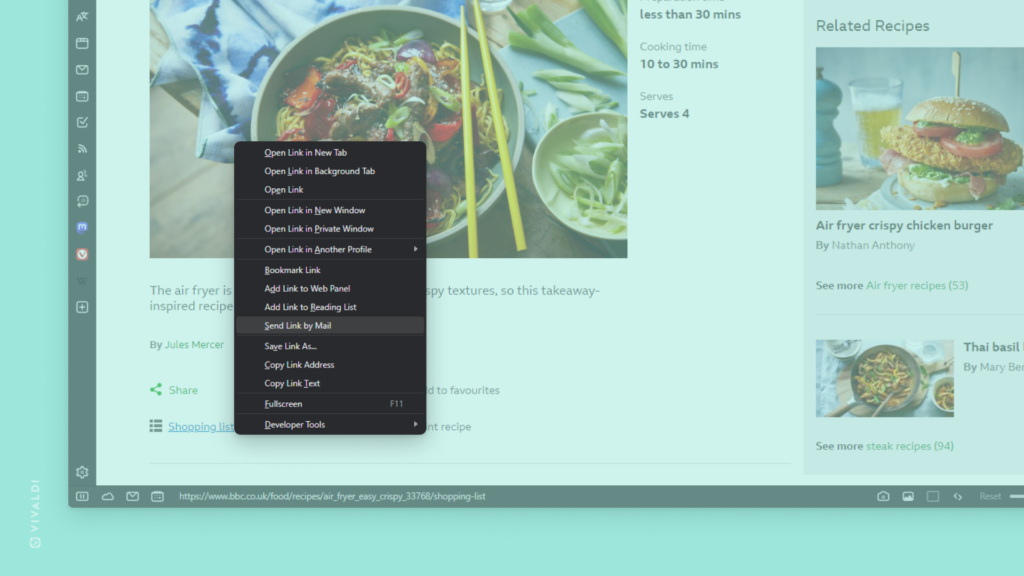Desktop Tips
Tip #433
February 22, 2024
Identify Web Pages that are malicious or legitimate by checking the base domain in the Address Field.
Fraudsters are an unfortunate part of the internet, constantly coming up with more and more ways to scam people. To help you spot malicious actors and prevent scams and phishing attacks, Vivaldi highlights the core part of the URL while the rest of the URL will be visible and lowlighted.
For example, if someone is trying to make you think that you’re on Google’s web page, they may use a link similar to this – www.google.fakesite.com. With base domain highlighting in addresses, the real domain will be highlighted and displayed as www.google.fakesite.com. This way you can recognize which company controls the domain and not fall for the scam.
You do have the option to disable base domain highlighting in Settings > Address Bar > Security Features, but we strongly advise you against doing so.

Tip #432
February 21, 2024
Use the Keyboard Shortcut Shift + K to mark messages in Vivaldi Mail unread.
When, on second thought, you’re not finished with an email and want to take another look at a later time, you can mark it as unread again. One of the easiest ways to do it, especially if you used a Keyboard Shortcut to mark the message read in the first place, is by pressing Shift + K on your keyboard.
But of course, there are other ways you can do it as well. Here are all the ways you can mark a message unread in Vivaldi Mail:
- Click on the
 Mark Unread button in the message toolbar above the message.
Mark Unread button in the message toolbar above the message. - Right-click on the message in the message list and select Mark Unread.
- Use the Keyboard Shortcut Shift+K. To mark the whole message thread unread, press Shift + M.
- Type “Mark Messages as Unread” in Quick Commands.
- Create a Mouse Gesture for the action.
Tip #431
February 20, 2024
Look up recent translations in the Translate Panel.
Whenever you translate selected text from a web page or something you’ve entered in the Translate Panel, the original text and the translation are saved in the Translate Panel.
To view Translate History:
- Open the Translate Panel.
- At the bottom of the panel, click on “Show Translate History”.
- Double-click on the entry you’d like to view.
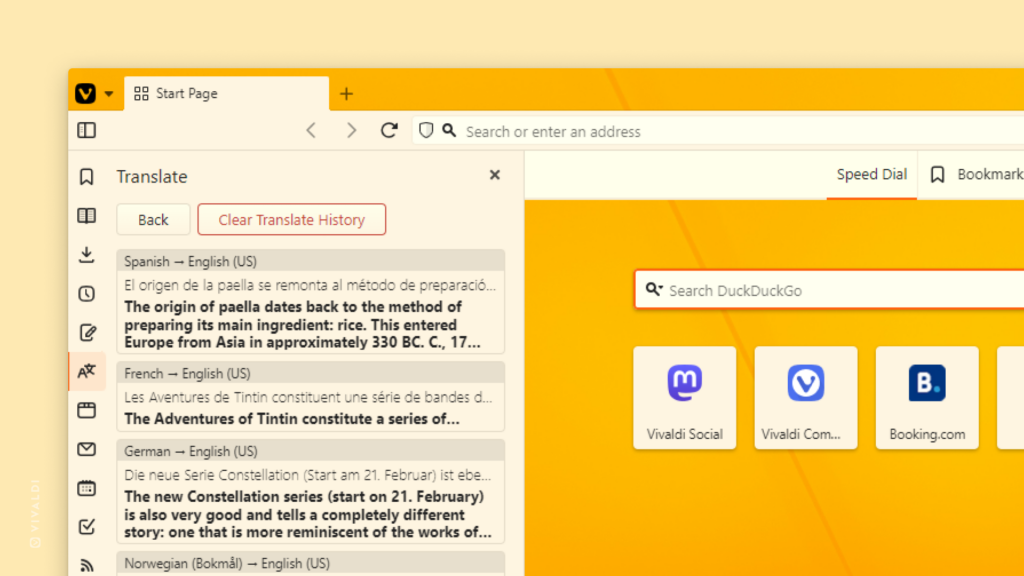
Tip #428
February 15, 2024
Organize your mailbox by labeling your messages.
Some organizational tasks must be undertaken to stay on top of your emails. Labels in Vivaldi Mail are a great way to group messages based on criteria of your choice, making it easy to locate the messages later.
You can add a label to a message in one of the following ways:
- Open the message, click on
 “Labels” on the menu above the message, and select an existing label or add a new one.
“Labels” on the menu above the message, and select an existing label or add a new one. - Right-click on a message in the mail list, hover over “Labels in the context menu, and select an existing label or add a new one.
- Drag the message from the mail list to the relevant label in the Mail Panel.
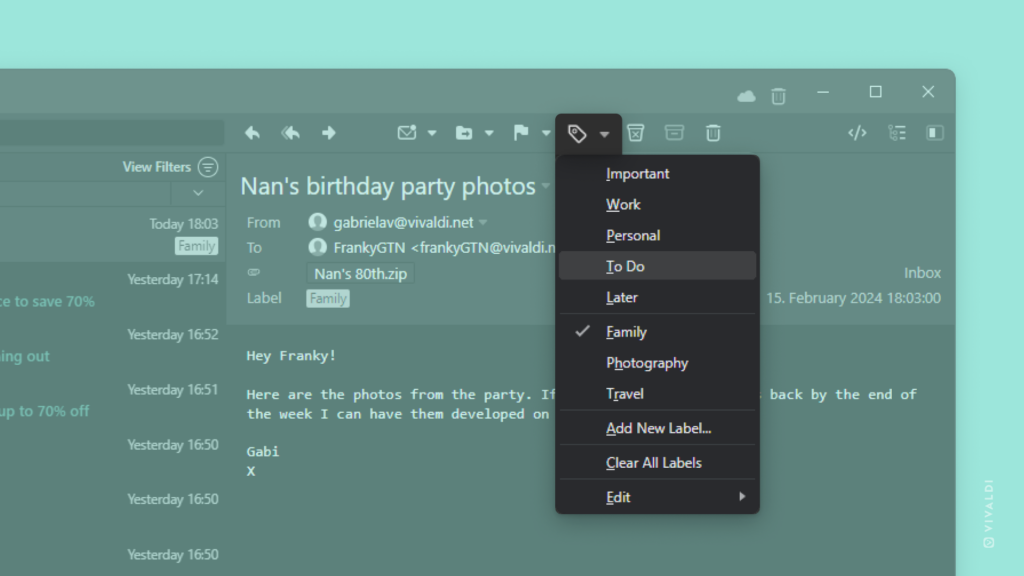
Tip #425
February 12, 2024
Press “C” to clean up the list of recently closed tabs.
It’s Clean Out Your Computer Day! To clear all browsing data in Vivaldi, check Tip #337. In this tip, though, we’ll share a neat trick to empty the recently closed tabs menu:
- Open the Closed Tabs menu on the far side of the Tab Bar.
- Press “C” on your keyboard for an immediate cleanup.
Aletrnatively, scroll to the end of the list and click on “Clear All” there.
To clear the list via the Windows Panel:
- Right-click on the Closed Tabs folder.
- Select “Clear All” from the context menu.

Tip #423
February 8, 2024
Invite people to events you’ve created in the Vivaldi Calendar.
Making plans together with someone? Instead of creating separate events with the risk of getting out of sync when the specifics of the event change, one person should create a shared event.
To create a shared event in the Vivaldi Calendar:
- First, ensure you have added at least one of your email accounts to Vivaldi Mail in Settings > Mail.
- Then, go to Settings > Calendar > Calendar Integration > Calendar Mail Account, and select your preferred mail account to be used for sending invites.
- In the Calendar, create a new event and fill out the details.
- In the Participants section of the event editor, type the email addresses of people you want to invite to the event. Press “Enter” to add them.
- Click “Done” when you’re ready with the event setup.
- Review the event invite and, if you wish, add a message.
- Click “Send”.
When you edit shared events, you can send a new email invite to the participants or skip notifying them.
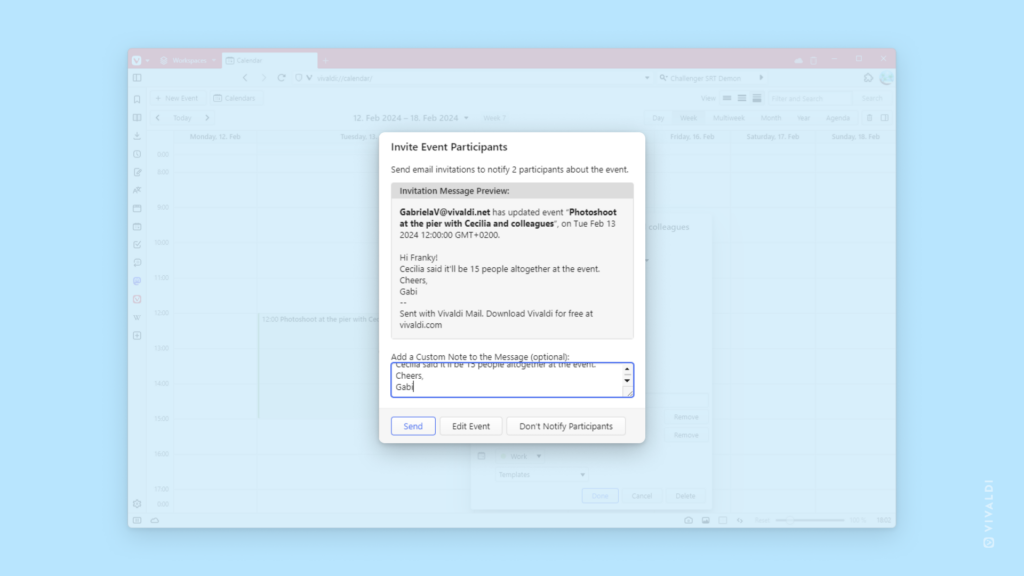
Tip #422
February 7, 2024
Keep the text you typed in the Search Field even after completing the search.
When doing consecutive searches with overlapping terminology, you can save time by keeping the previous search in the Search Field. That way you’ll only need to edit the search keywords slightly to start a new search.
To enable this setting:
Tip #419
February 2, 2024
Add additional information to a note by appending text from a web page.
Selecting text on a web page and creating a note from it is an excellent feature in Vivaldi, but what if you want to add new lines from a web page to a note you have made in the past? You could copy the text, find the note in the Notes Panel or Notes Manager, and paste it there, but there’s a better way.
To add text to an existing note:
- Select the text on a web page.
- Right-click on the selection to open the context menu.
- Select “Append to Note”.
- Choose the note you want to add the text to.
- Click “Add to Note”.
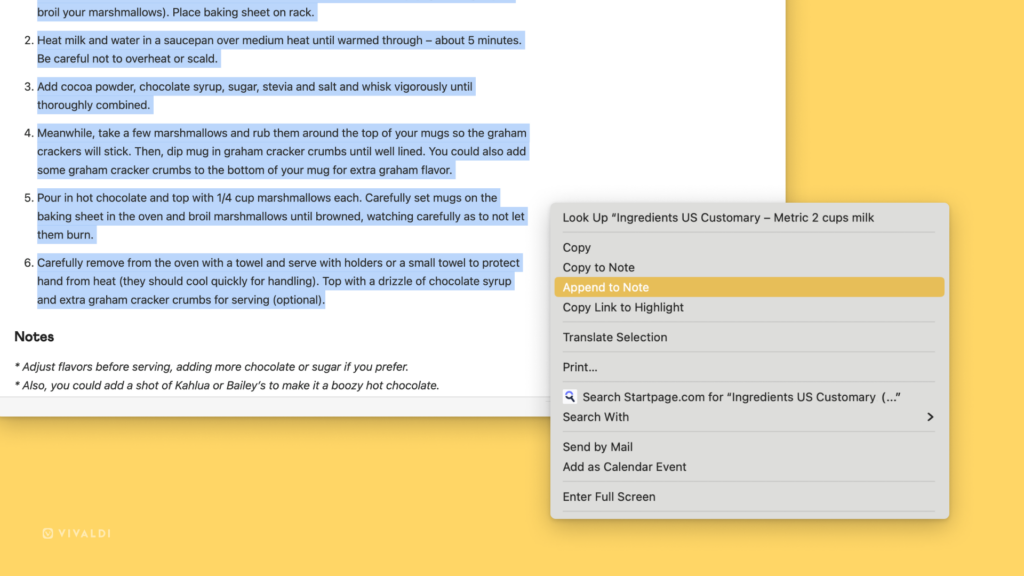
Tip #418
February 1, 2024
Press “R” to fetch the latest Calendar events from online calendar accounts.
Vivaldi Calendar checks for updates from the online calendar accounts you’ve added to Vivaldi every 10 minutes. You can also trigger updates manually. When you have single-key Keyboard Shortcuts enabled, the easiest option is to just press the R key and you’ll be up to date.
In true Vivaldi fashion, there are other ways to update the calendar:
- In the main Calendar view, open the Calendar’s menu in the top left corner and select “Refresh”.
- Click on the Calendar button on the Status Bar, go to the Accounts tab, and click “Refresh”.
- Type “Refresh Calendar” in Quick Commands.
- Create a Mouse Gesture for the action.
Tip #416
January 30, 2024
Use the Keyboard Shortcut F4 to toggle the visibility of the Panels sidebar on and off.
Vivaldi’s Panels are one of the most useful features in Vivaldi. But if you’re a fan of a minimalistic user interface, you might find yourself having to choose between a super clean look and easy access to the Panels.
With Keyboard Shortcuts, you can have the best of both worlds. By pressing F4 on your keyboard, you can display the Panels sidebar and when you’re done, use the same shortcut to hide it again. You don’t even need to close the Panel you were last looking at.
But as it’s Vivaldi, there are a few other options you can choose from to toggle the sidebar on and off.
- Click the Show Panel button on the left side of the Address Bar.
- Go to Vivaldi menu > View > Show Panel.
- Type “Panel” in Quick Commands.
- Create a Mouse Gesture for the action.
Tip #415
January 29, 2024
Skip confirming window and browser closing dialogs.
When you’re confident in your actions and don’t feel like you need to be asked whether you’re sure about closing a single window or the browser altogether, you can easily disable the prompts.
To disable the confirmation dialogs:
- Go to Settings > General > Close and Exit.
- Disable either “Show Exit Confirmation Dialog”, “Show Close Window Confirmation Dialog” or both.
Alternatively, tick the box for “Do not show confirmation again” when prompted with the dialog.
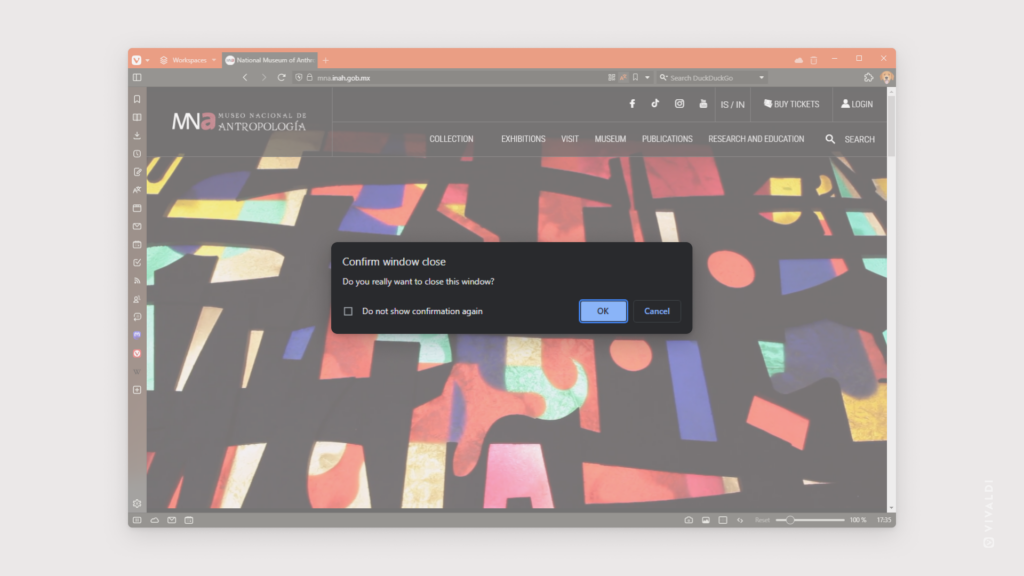
Tip #414
January 26, 2024
Send links and selected text from web pages to others effortlessly with Vivaldi Mail.
One of the perks of having a mail client in the browser is that you can quickly share interesting content you’ve found online via email.
To send a link or a snippet of text you’ve found on a web page:
- Make sure you have Vivaldi Mail enabled and you’ve added your email account to it.
If not, go to Settings > Mail to set things up. - On a web page, right-click on the link or selected text you want to share.
To send the link of the current web page you’re on, right-click on an empty area of the page. - Select “Send (Link) by Mail”.
- In the email editor tab that opens, fill out the relevant fields, and add more context to the email.
- Click
 “Send”.
“Send”.
